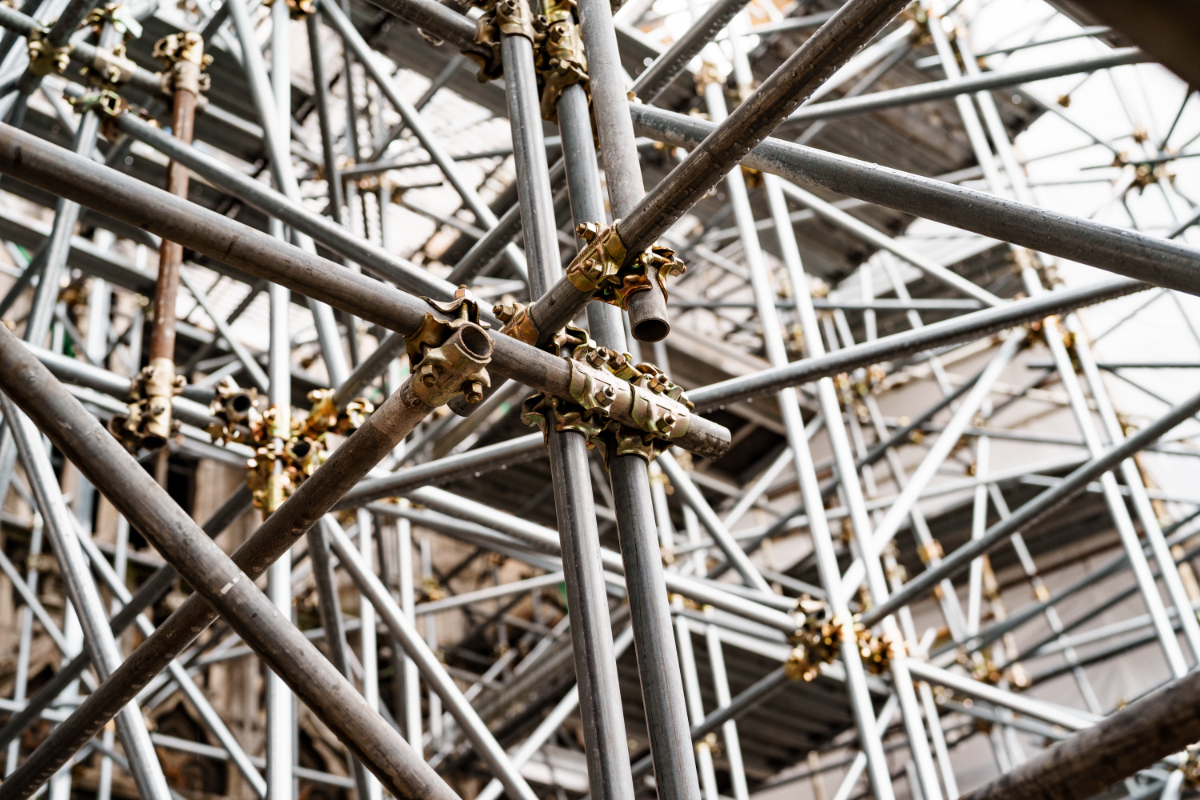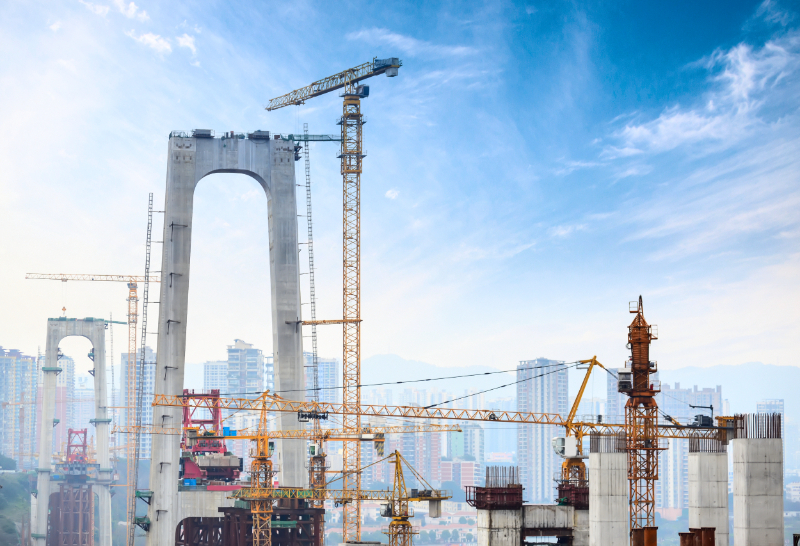What are the uses of scaffolding in construction? Find out more about the different types of scaffolding and why scaffolding is important during construction.
When is scaffolding required?
Depending on the scale of your project, it can be tricky to assess whether or not you require a scaffolding of a particular description installed. The best way to find out is by conducting a thorough risk assessment. By law, you must hire a competent person on-site to complete a risk assessment and inspection when working at height to ensure all jobs on the scene are carried out safely.
If your frame was not correctly installed, it is rendered an unsafe scaffolding, and your inspectors will detect the issues, and you must have your frame re-assembled. Painting houses at a low level or performing minor repairs will only require sturdy ladders. However, if you and your staff work for long periods at extensive heights, you will need to implement some form of fall prevention or fall arrest equipment to take precautions.
Contact competent tradespeople or scaffolding contractors, and they will be able to provide sufficient advice on whether or not your project needs an appropriately designed scaffolding system.
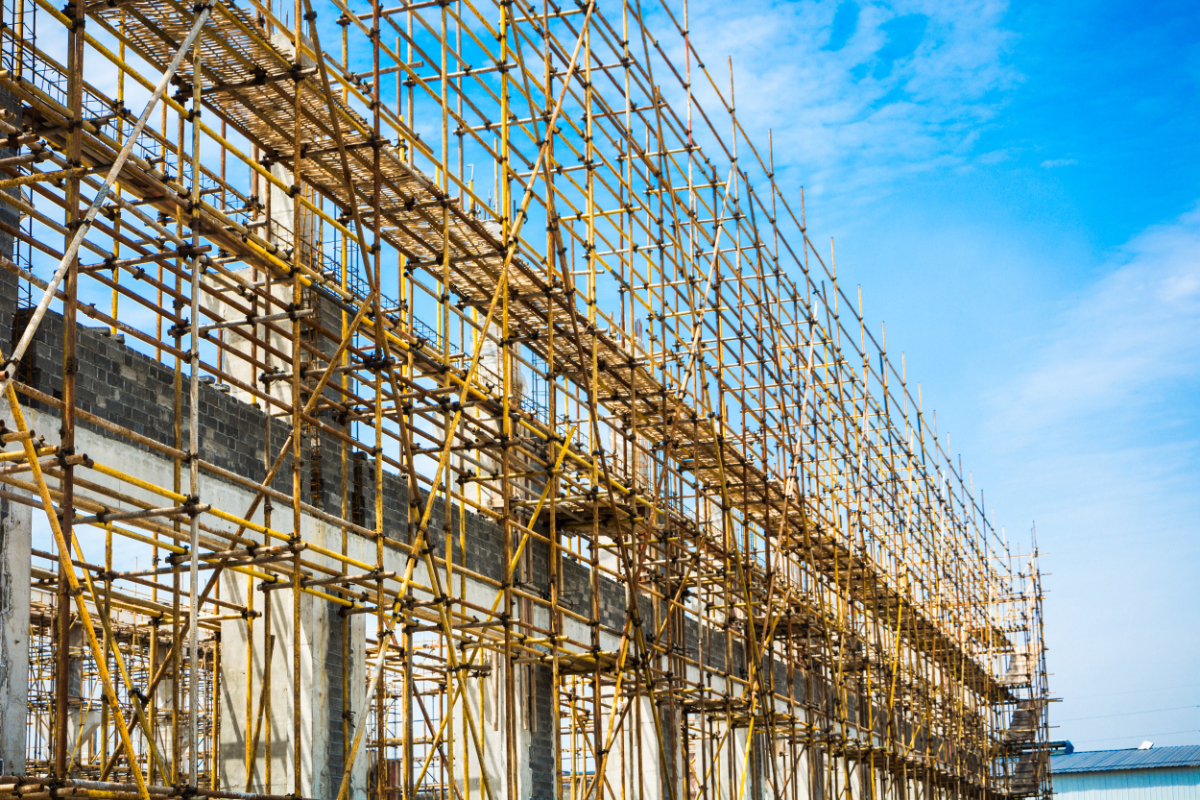
What are the different types of scaffolding?
It's helpful to make yourself aware of the numerous scaffolding types available and which would be the most suitable for your current project.
There are tubular scaffolds, bamboo scaffolding, cantilever scaffolds, wooden scaffolding systems and many more to choose from.
Single scaffold
A single scaffold system is often named the bricklayer's scaffolding, which is often built parallel to the wall you wish to work on at construction sites or properties. Single scaffolds are most effectively used for brickwork in households.
Double scaffold
These are predominantly used for stonemasonry in locations where you cannot make sufficient holes to support such extensive metal scaffolding.
Manufacturers created double scaffolding with two rows of robust scaffolding, with its first row approximately 20-30cm from the original wall and its other row at least a metre bay width away to provide enough space.
These scaffoldings are connected with cross braces and cross beams, ensuring your work crew is on a sturdy man-made structure; they may come complete with double guard rails for extra protection.
Cantilever
These are designed to be used in areas where the ground cannot adequately support scaffolding structures or tall buildings, such as rough terrain.
Cantilever scaffoldings utilise timber needles that are usually extended out from the walls your builders are working on, renovating or constructing. These are most effective for work on half-finished buildings located on main roads or busy roads that cannot be closed for your project.
Suspended scaffolding
It is common for many professional window cleaners in the industry to use the help of suspended scaffolding to complete the job for high-rise buildings.
As opposed to being raised from the ground, a suspended scaffold hangs from the roof and over the building. It can be lifted or lowered to ensure your construction workers are positioned at the right level to perform their tasks.
Steel scaffolding
Steel scaffolds are used exponentially throughout construction or repair work, predominantly made from steel tubes fixed together with fittings or steel couplers, unlike wooden scaffolding made using wooden poles.
Its design allows for improved durability, extensive strength, fire resistance and immense safety standards for workers, which is the perfect combination of attributes for a scaffolding structure. The Health Administration approve steel scaffolding in various industries for its durability.
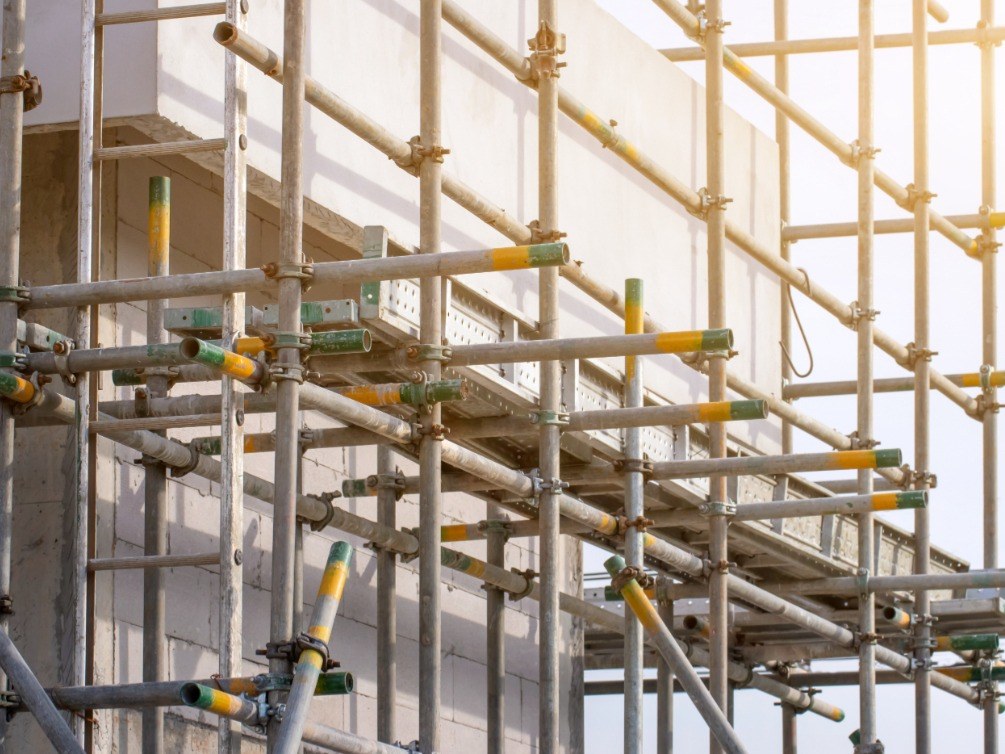
Steel Scaffolding

Single Scaffold
Patented scaffolding
Patented scaffolding is sometimes referred to as readymade scaffolding that can also be made of steel, and its adapted forms are designed to be flexible for any work.
They are incredibly straightforward fabricated frame systems to assemble and disassemble, making the work more efficient for those with deadlines.
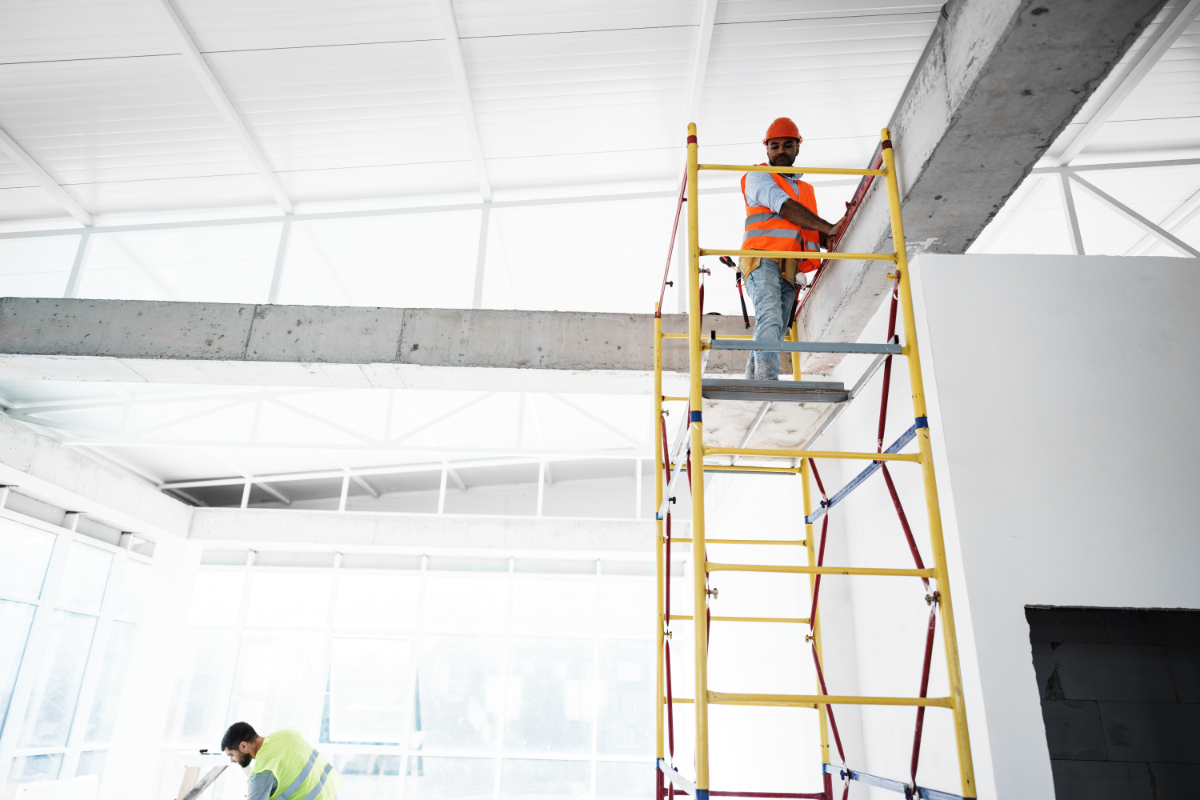
Trestle scaffolding
Trestles are more used in scenarios where significant indoor work is approximately five metres high.
They are curated with a base of ladders or tripods with robust boards on top, and this form of scaffolding is best for tasks that involve the painting of ceilings, exhibition stands or walls.
Aerial lifts
Aerial lifts are often found within three primary categories of fall arrest equipment: boom lifts, scissor lifts and telehandlers.
Aerials are known for being adjustable, and mobile platforms are utilised explicitly for workers aiming to work on hard-to-reach areas or those that need to raise heavy loads at height. These eliminate the need to build an extensive scaffolding frame, especially for smaller jobs.
For those picturing a construction site, you'll be familiar with scaffolding via the image of a half-finished building surrounded by a steel structure that contains several workers completing different tasks.
Scaffoldings are one of the most familiar and frequently utilised fall prevention methods for architectural work. When looking for the best ways to ensure your workers and builders are safe while performing new build art projects or significant maintenance work, understanding why they are so essential to have installed is vital.
Installing scaffoldings on a site at the beginning of a building project will offer plenty of support, extra space and elevation for your employees when carrying materials and conducting work to forward the process.
Whether your team is looking to perform intense cleaning of high-rise properties, installations of concert stages with grandstand seating, or repairs of roofing or damaged buildings, ski ramps and roofs, scaffolding, and high platforms can be erected to achieve the job.
The primary reason, aside from efficiency, is to provide occupational safety and security for workers and any bypassers that may be passing the site or lurking below the platforms or base plates.
KEY REASONS WHY THE CONSTRUCTION INDUSTRY USES SCAFFOLDING
1
IT'S EFFICIENT
The primary purpose of construction scaffoldings is to ensure workers and builders have secure barriers and safe working platforms that surround them during duties such as re-builds, new builds and repairs that enable them to work at considerable heights.
Safe temporary platforms allow multiple workers to manoeuvre across any property or site of any size or shape. Many people can use scaffolding, making construction jobs far more efficient.
Scaffolding structures only take a day to erect and must be inspected by a competent person familiar with the mechanisms involved.
Such platforms help reduce the time spent on-site, especially when time is of the essence and your construction project's due date is creeping up. Ladders and similar equipment can be time-consuming, especially when dealing with numerous tools and materials, you need on your person or beside you for certain tasks.
2
IT ENSURES SAFETY
There are always risks and significant elements of danger when working at height that could result in serious injury. Scaffolding platforms offer a secure and safe working environment for carrying out extensive tasks, such as building, repairing and renovating at considerable heights.
It's mainly utilised to protect the health of your employees; however, they are also beneficial for protecting the health and safety of the general public that may be walking below.
The barriers have the structural design to catch any bricks, equipment and loose debris so that no falling objects could end up on the pavement, creating a safe space for all involved.
3
EASY TO ACCESS
Constructing more creative and innovative ways often requires more accessibility to hard-to-reach areas to curate brand-new designs. There are so many architectural designs that your workers may want to assist in building and working on, and these may include strange structures that are difficult to create with limited space.
Bespoke scaffoldings are offered to many building companies, and they will curate a specific platform; that way, there isn't any blueprint or design that your workers cannot complete. Scaffoldings have been skillfully used to construct some of the world's most notorious, famous and complex buildings and properties across the world.
4
PRIME POSITION FOR WORKERS
One of the most significant benefits you will discover as a worker or builder in the industry is that temporary structures like scaffolding are a structural frame that places you and your team in the most strategic positions, enabling you to carry out your job safely.
The addition of elevation scaffolding ensures that you and your staff never have to rely on ladders throughout the process, which have a tenancy to be unstable. Working on a ladder will mean that you are on a diagonal angle when performing your tasks, which means you don't have great balance or a solid platform to work on, and you may struggle to get to hard-to-reach areas.
Scaffolding construction allows workers and builders to complete tasks in front of the building, making work on portions of an establishment or household ceiling or wall much more accessible, with more movement. Unlike movable ladders that one individual can only utilise at a time, scaffolds allow multiple builders to work side-by-side and keep more materials and small equipment with them.
Scaffolding is a vital and integral part of the building industry, ensuring all on-site workers can maintain, repair and erect new and old high-rise properties in a secure setting. They are built with frames, vertical posts and metal bars that ensure all employees are safe to carry themselves and any equipment up to extensive heights without the worry that they are too exposed to the elements.
Ladders also make jobs incredibly time-consuming, as most of the time is spent travelling up and down with different equipment, which could tire out your workers faster. However, scaffolding ensures fast completion; it is easy to erect and inspect and enables all workers to easily access all the necessary equipment without having to carry it all at once.
They are most notably used to guarantee safety whilst working at heights and protect the general public from being harmed during a new build or critical repairs. It's vital to ensure there are competent individuals on-site to inspect the scaffolding and hire a scaffolding contractor that is credible and registered.
London Scaffolding provides commercial scaffolding hire in and around London. Our company provides a range of scaffolding services for working at height in London.

